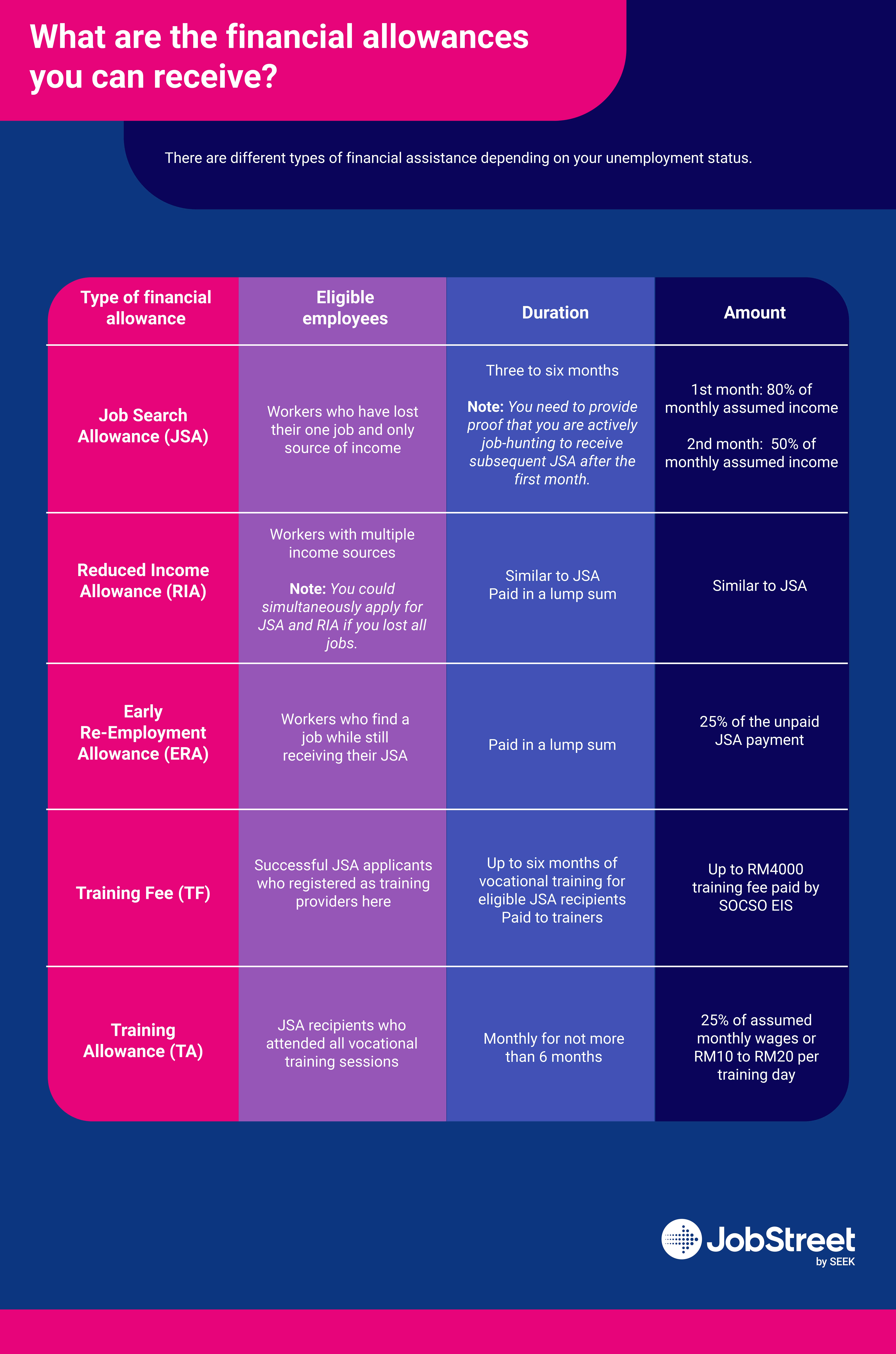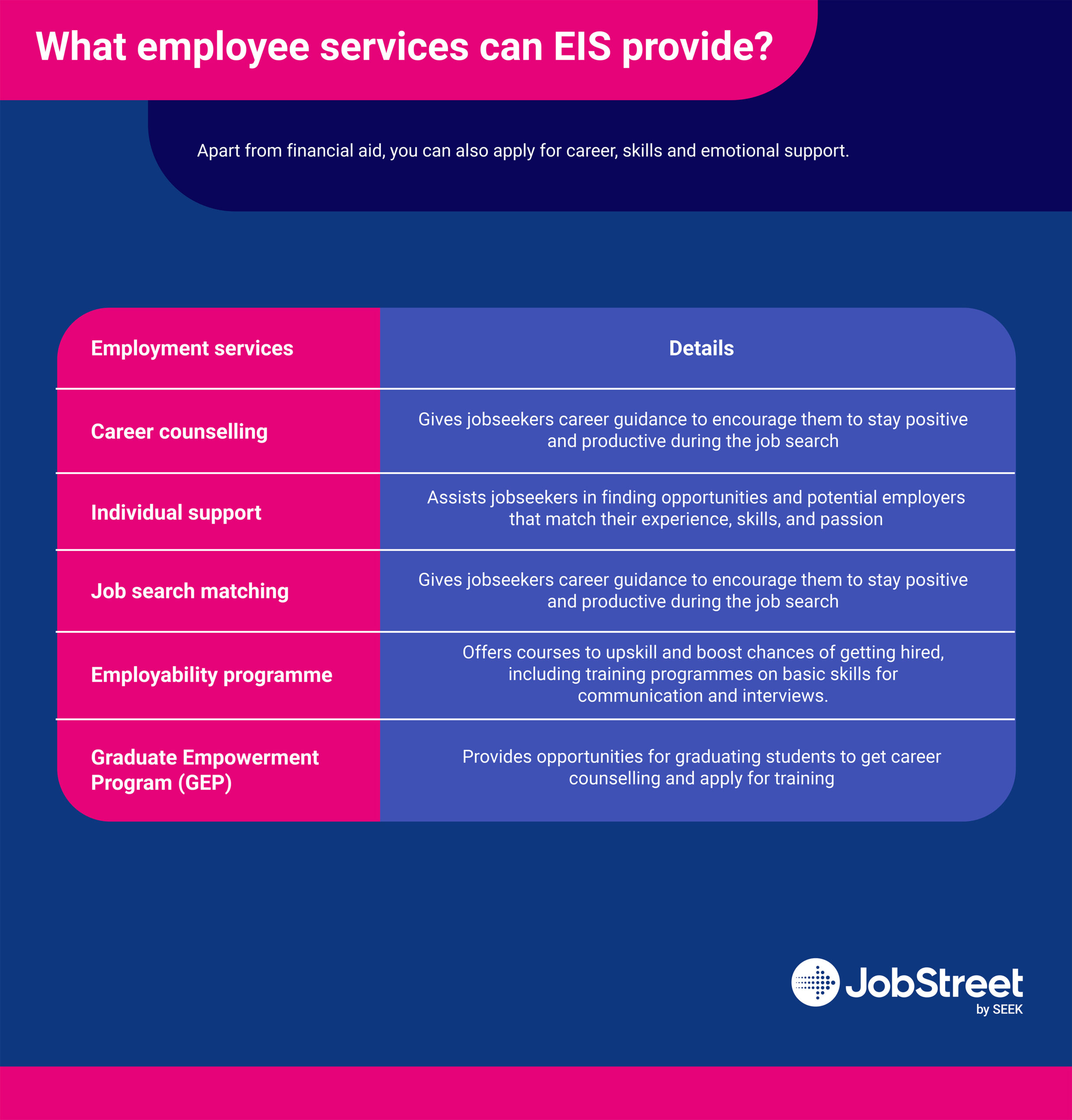Employee Insurance Scheme Questions, Answered! 12 Things Every Malaysian Should Know
Job loss has been one of the most significant impacts of the COVID-19 pandemic. Fortunately, if you are looking for a new job, the Employee Insurance Scheme (EIS) can help you get back on track. The EIS benefits can support your job search efforts for better chances of re-employment.
Read this guide to learn all about the Employee Insurance Scheme — from its assistance and services, the eligibility and requirements, to the process of claiming your EIS benefits.
Disclaimer:This article is not a substitute for legal advice. JobStreet will not be held liable for any actions taken based on this article.
What is the Employee Insurance Scheme?
Under the SOCSO (Social Security Organization), the Employee Insurance Scheme (EIS) or Sistem Insurans Pekerjaan (SIP) is a government insurance system implemented in 2018. Its goals are to provide financial aid and employment assistance to workers who lost their jobs.
Is EIS different from EPF and SOCSO?
The short answer is yes. Your EIS, EPF (Employees Provident Fund), and SOCSO contributions are all deducted from your wage. However, each of them provides security and benefits in different scenarios. Here is a table to help you understand the difference between EIS, EPF, and SOCSO.
Who can be insured under EIS?
The Employee Insurance Scheme requires private sector employers to register their workers as Insured Persons (IP). Qualified employees include:
- 18 to 60 year olds
- Malaysian citizens or permanent Malaysian residents
- Full-time and part-time employees
- Earning any salary amount
The EIS does not cover:
- Government workers
- Domestic workers
- Self-employed
- Local authorities and statutory bodies employees
- Those 57 years old and above who do not have prior contributions
Who are eligible to claim EIS benefits?
Your reason for job loss matters when claiming EIS benefits. These reasons should show uncontrollable situations; thus, you are only eligible if your Loss of Employment (LOE) is due to:
- Retrenchment and redundancy
- The mutual separation scheme (MSS) or voluntary separation scheme (VSS)
- Business closure due to bankruptcy or natural disasters
- Constructive dismissal
- Dangerous tasks outside your role
- Sexual harassment
The following LOE reasons do not make you eligible for the benefits:
- Employee misconduct
- Voluntary resignation
- Contract expiration
- Retirement
What are the financial allowances you can receive?
There are different types of financial assistance depending on your unemployment status.
What employee services can EIS provide
Where does the financial assistance come from?
While the government mandates EIS, you and your employer are the ones contributing to it.
Monthly contributions start at 10 sen for workers earning RM30 a month (five sen each from employer and employee). Meanwhile, the maximum contribution is capped at RM7.90 for those earning RM4,000 and above. The rate of contribution differs depending on your monthly salary.
What are the conditions for a successful claim application?
The SOCSO has an evaluation process to approve or reject your request. You have to comply with the following guidelines:
- Process your application within 60 days from your Loss of Employment (LOE) date
- Meet the Contributions Qualifying Conditions (i.e., paid required SOCSO EIS contributions within the mandatory period)
- Your Loss of Employment (LOE) must be valid under the specified reasons above
How do you apply for EIS claims?
You can apply for your EIS claims online or go to the nearest SOCSO branch. Ensure you provide copies of these documents:
- National Registration Identity Card Number (NRIC)
- Resignation letter
- Payslip for the last six months before the termination of work
- Personal bank account details
- Medical report (for LOE due to health problems)
- Other documents that support your reason for LOE, such as:
- Police report for sexual harassment cases
- Documentation of dangerous job assignment
After submitting, here are steps to check your application status:
- Login to the EIS portal or check your email to know your status.
- Once approved, accomplish and submit the Re-Employment Placement Form.
- Your first-month financial allowance will be credited to your bank account within seven working days after your application approval.
What is SIP Prihatin 2.0?
If you are actively job-hunting and have attended interviews but still have no assurance of employment within six months, then you can apply for SIP Prihatin 2.0.
SIP Prihatin 2.0. offers lenient conditions and extended assistance to help more workers, especially those affected by the pandemic.
You may receive Elaun Mencari Pekerjaan (EMP) SIP Prihatin 2.0 of RM300 per month for two months only. When hired while receiving EMP, you can get a one-time Elaun Persediaan Bekerja (EPB) of RM400.
Who are eligible for SIP Prihatin 2.0 claims?
You can receive EMP if you have attended at least three interviews for each monthly payment. If you are hired while receiving EMP, you will also get EPB payment. The total amount will depend on how many interviews you have attended and when you are hired.
Those who did not qualify in contributions qualifying conditions (COC) can also apply for financial aid.
How do you apply for SIP Prihatin 2.0?
You need to register and accomplish your MyFutureJobs account. To ensure a successful application and payment, you also need to:
- Register to receive EMP payments using the PRIHATIN PERKESO mobile app (available on Google Play and App Store ).
- Update your activity logs for every job interview you attended.
- Update your return to work date once you are hired. Upload supporting documents that prove your employment, such as job offer letters.
It pays to be familiar with the contributions and taxes you see on your payslip. The Employee Insurance Scheme is immediate support that will come in handy during your job search. The EIS benefits are only temporary, so ensure you use them to help yourself focus on landing a new job. May you find continuous financial stability and career advancement!
Want to see a complete breakdown of your salary deductions, including your EIS contributions? Use JobStreet’s Salary Calculator here.
To maximise these financial and employment aids, stay driven and search for #JobsThatMatter. Create or update your JobStreet profile and connect with potential employers. For more job hunting and interview tips, visit our Career Resources.




